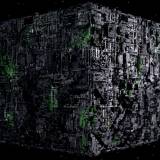All 3DO Games (Kinda) In Order: 1994 (Part 05)
By borgmaster 3 Comments
An explanation of what's going on here can be found in the intro post.
Last week we looked at the Saturn classics released in April '96: X-Men: Children of the Atom, Panzer Dragoon II Zwei, and Guardian Heroes.
Last time with the 3DO, we came to grips with the '94 classics bangers games: Burning Soldier, Demolition Man, Jammit, Supreme Warrior, and Super Street Fighter II Turbo.
Now, we have our last batch of 1994 3DO games for which I have release dates. These lucky titles are Off-World Interceptor, Strahl, Shanghai: Triple-Threat, Starblade, and Advanced Dungeons & Dragons: Slayer.
**This post is also featured on my site, fifthgengaming.blog, and can be found here.**
----------------------------------------------------------------------------------------------------

Off-World Interceptor
Developer: Crystal Dynamics
Publisher: Crystal Dynamics
Release Date: 11/22/1994
Time to Getting Cash Copped: 24 Minutes
We're starting with the original version of a game we've already looked at on the PS1 and Saturn. As of now, we have covered every console version of the first four games developed by Crystal D, who were determined to spread the misery around to as many places as possible. Maybe I need to do more in-depth research about these chuckleheads.
This being our third go around with Off-World Interceptor, I super have nothing new to add. Even though the later ports tacked the word 'Extreme' onto the end of the title, they're 99% the exact same as this original release. For whatever reason, I had the idea in my head this whole time that the shitty joke track layered over the FMV was the big change made for the 'Extreme' ports, and the original had the unaltered live action footage. Turns out I was completely and totally wrong about that. The FMV is sadly as unchanged as the gameplay. That's a real bummer, because these jokes make me increasingly angry every time I watch it. The only differences I could spot are that the 3DO version runs slightly worse and seems to be balanced at a slightly higher difficulty. Those are two things that do not mix well together.
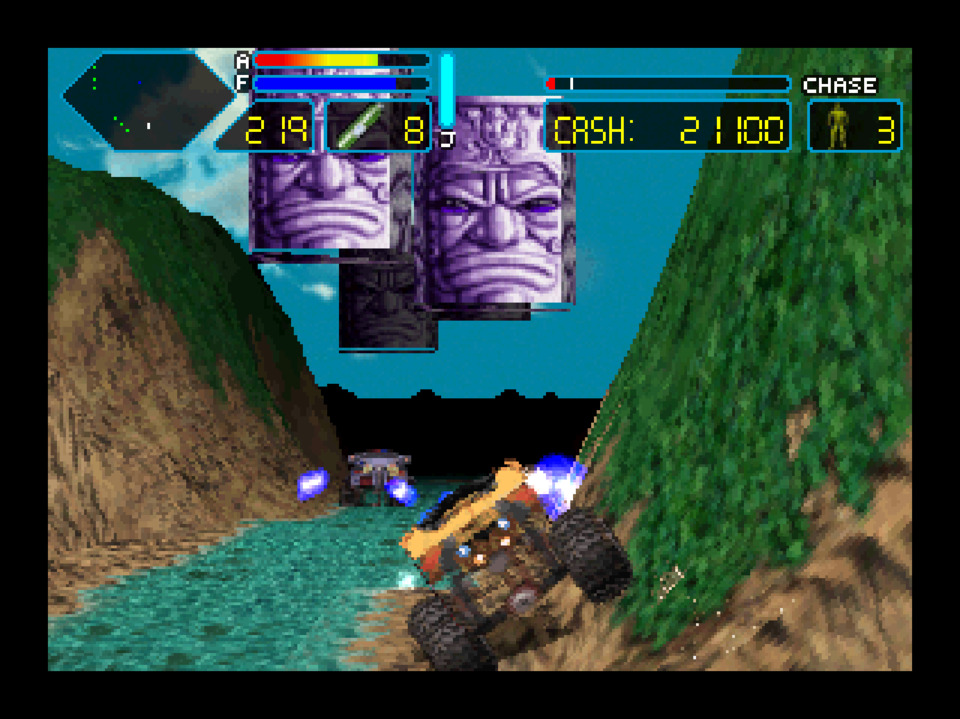
My issue with the writing came into even sharper focus when I streamed it. If you watch a cheesy movie or any other low quality dramatic performance with other people, either physically or virtually, the tendency is to make fun of it. It's a communal exercise to think of funny or clever goofs, and it's enjoyable even if no one involved comes up with anything good. That's the whole idea behind MST3K, except in that case those jokes were carefully chosen by a room full of writers who watched the footage multiple times. Lazy knock-offs like you see here will have one or two guys watch the footage once or twice and they'll crap out the first things that come to mind. It doesn't help that in this case the voiceover uses a frat bro affect, which only heightens the annoyance. You know, I've complained about this enough times that I might as well show you a cutscene compilation. As a warning, watching it deals significant psychic damage.
----------------------------------------------------------------------------------------------------

Strahl
Developer: Media Entertainment
Publisher: Panasonic
Release Date: 12/2/1994
Time to Completion(?): 41 Minutes
There's always at least one game per entry in this 3DO blog series that can be described as 'inexplicable', and that's the only word I can come up with to describe this thing. Basically, Strahl is an old school Interactive Movie in the style of Dragon's Lair but with anime. You might think that's very explicable, right up until I tell you this was originally released on the Pioneer Laseractive. If you know what that is, don't spoil it for the person sitting next to you, this is gonna be a journey.
Pioneer is a moderately large consumer electronics corporation in Japan known mainly for their early involvement with optical media and their current emphasis on car accessories. That first part is of interest to us, because they were one of the biggest companies who tried to make LaserDisc happen. You remember LaserDiscs, right? They're everyone's favorite absurdly large optical disc format. Anyway, there's not a ton of information in English about why, but in 1993 Pioneer put on sale an enormous box called the LaserActive for something like $1000, and it might be the most absurd 'console' ever put on shelves.

The LaserActive is a little more than three times the volume of an original Xbox and three times the weight. The top half is a combined LaserDisc/Compact Disc player and the bottom half is modular, which can switch between Mega CD, PC Engine CD, and karaoke modules. You might think you read that wrong, but Pioneer did in fact do business deals with Sega and NEC to make this monstrosity fully compatible with Genesis and Turbografix games. Trying to explain how this physically works gives me a headache, so read this instead. The main thing to note is that all of the games released specifically for the LaserActive needed to use the LaserDisc player in conjunction with either the Mega CD or PC Engine CD modules. So, any individual game would come with a big 'ol LaserDisc and a smaller CD or maybe even a Genesis cart or Hucard, which made them prohibitively expensive. Because of this bizarre mixed media setup, there were exceptionally restrictive constraints placed on what kinds of games would work on it. This means the 50-odd games put out on the thing during its three year lifespan were all either some flavor of Rail Shooter or Interactive Movie. One of these was Strahl.
Not that Strahl was developed with the LaserActive in mind. As far as I know, it was originally developed in 1985 as an arcade LaserDisc game meant to ride the coattails of Dragon's Lair. My guess is that Data East got in too late and by the time the game was ready for distribution the interest in LaserDisc cabinets had bottomed out. So, Strahl was put on the shelf until an easy publishing opportunity presented itself. It would sit there for a decade. I don't know why they decided the LaserActive was the right platform instead of the earlier CD based systems, but I guess once the work was done to make the game functional on a modern system it wasn't that hard to port it over to the CD format entirely. That's as far as I can reckon how it made its way to the 3DO.
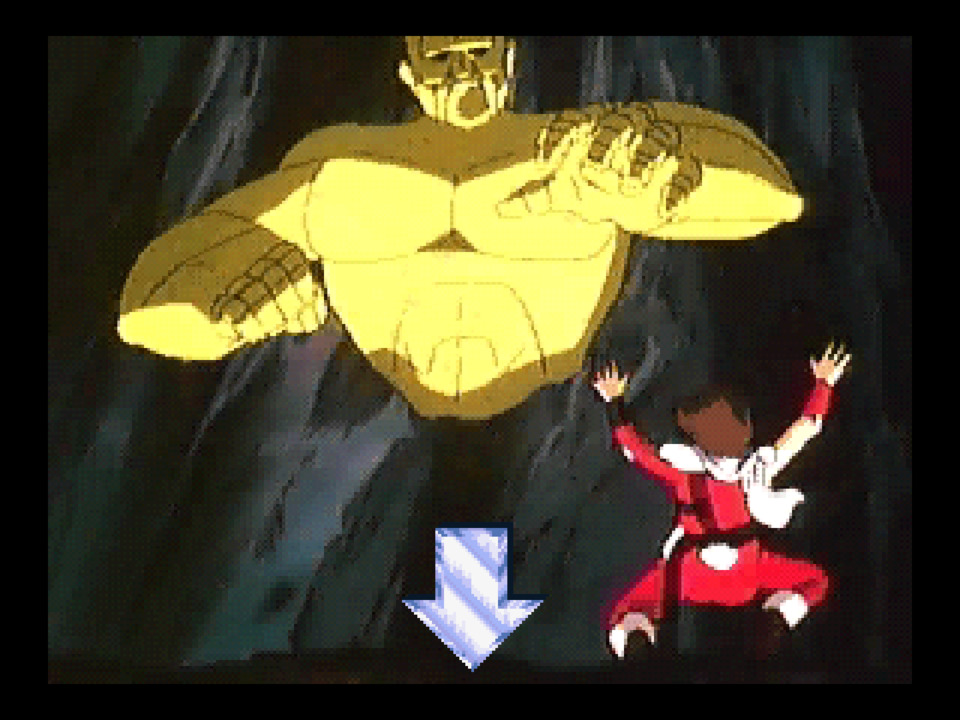
With all this build-up, is the game itself anything to write home about? Of course not. The experience consists of an intro cutscene and eight disconnected playable scenes. You access those scenes from a stage select screen where you have three options for the first level and then the remaining six in any order until you unlock the final scene. That makes progression slightly open-ended, and supposedly playing the scenes in different orders unlocks different endings. If you fail a scene, you get booted back to the stage select to try any of the available options again. It seems like you have three lives and if you run through them you start from the beginning. This is a significantly simpler structure than the Bluthimation games, where each scene leads into each other semi-randomly. Strahl is much fairer than those games, which is why it wouldn't have worked in an arcade setting. Continuing from that idea is the generous and clearly communicated input prompts found here. In that regard, the gameplay works more like modern Quick Time Events than in Dragon's Lair; this will be the only time you see me express a positive opinion about QTEs.
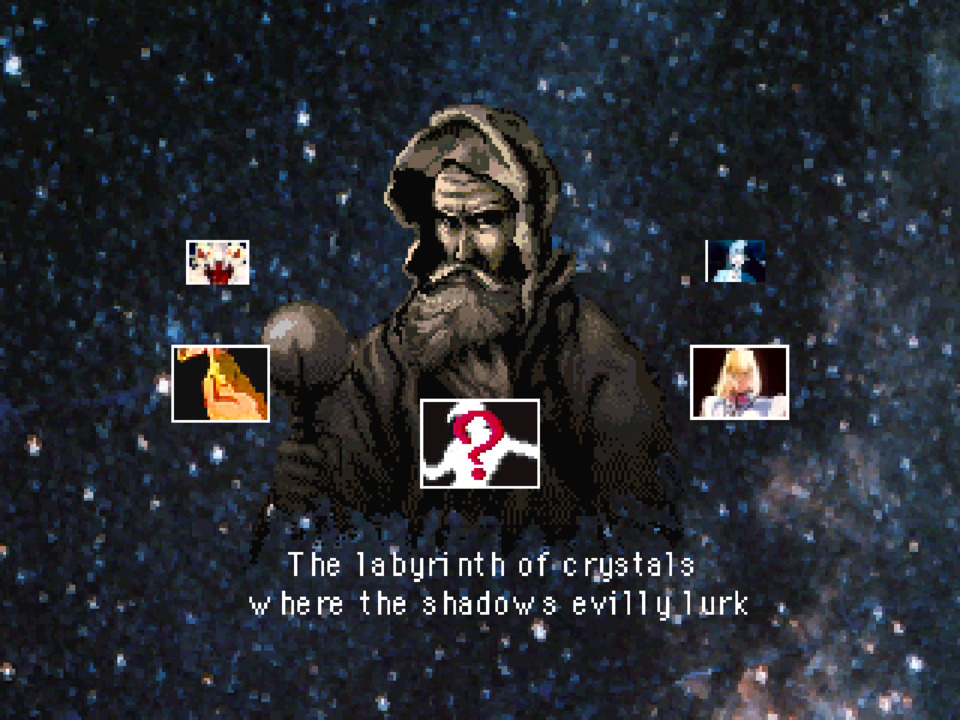
The premise driving the action forward is almost nothing. You play as some guy who is instructed by an old man, who is actually God, to gather seven crystals and defeat an evil wizard or something. The narration implies your guy is supposed to become the rightful king of the land after the adventure, but I got an ending where he seems to transform into some kind of bodhisattva so who the hell knows. The scenes themselves are disconnected from each other thematically, with each usually revolving around some kind of boss fight. That brings us to the footage itself. The animation here is on the same tier as a mid-budget 80's anime OVA. That would have provided a fine counterpoint to 80's American animation, which is generally gnarly to look at, but this is the mid 90's at this point so the entire look and sound of this thing is downright anachronistic.
Overall, it's easy enough to play and you could have an alright time watching someone else play it **hint** watch my stream archive **hint**. Though, I can't imagine paying full price for this thing at release. Also, as a housekeeping note the copyright on this game is 1995, so it looks like the LaserActive release was '94 and it was ported the next year. That would seem to invalidate its inclusion in the '94 3DO line-up, but here's the thing: nothing is real and the world is chaos. As such, I'm putting it on the list and you can't stop me. As a consolation, here's a contemporary EGM review of this game.

----------------------------------------------------------------------------------------------------
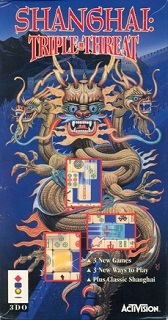
Shanghai: Triple-Threat
Developer: Success
Publisher: Activision
Release Date: 12/13/1994
Time to Getting My Tiles Matched: 18 Minutes
We last encountered this game with its Saturn version released in September '95. If you're wondering whether this earlier 3DO version is literally the same game, the answer is yes. The only difference I noticed is that it seems to run at a lower resolution and the onscreen cursor doesn't move as well. Even with those minor technical flaws, this still might be one of the better 3DO games we've seen so far by default. That's all I have to say. There are better ways to play Mahjong Solitaire these days and the PC version of this would have been a better choice back in the mid 90's. I've also gone over the history of this franchise, so what else is there…
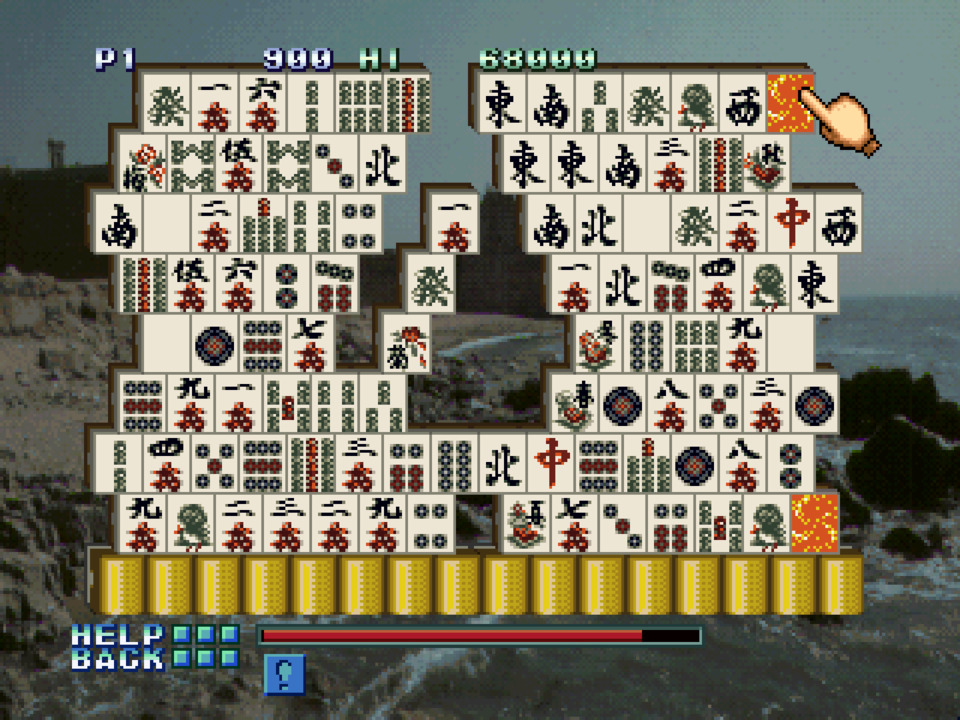
Right, where does Mahjong Solitaire even come from, anyway? The Shanghai series of video games got started in 1986, but the idea had to come from some earlier source. As far as I can tell, The first documented instance of this style of game comes from an American guy named Brodie Lockard, who programmed the first Shanghai game on a PLATO terminal, of all things, in 1981. He claims to have seen someone play the turtle configuration in real life, but I don't know of any documentation of that being a thing at any point before 1981. As far as I'm concerned, he made it up, which is wild.
Then there's Mahjong itself, which has all kinds of legends around its origins, but no documented evidence can be found any earlier than the 1880's. That's surprisingly young for something so ubiquitous. Best anyone can tell is that it developed as a combination of a kind of card game dating back to the Ming era and dominoes. There are also the similarities between Mahjong and Rummy, which is a rabbit hole I am in no way equipped to explore. I suggest you do what I do and assume every card and tabletop game is less than 200 year old, no matter how traditional it seems. I don't have anything else to say about this…oh, did you know that nice, full sized mahjong sets are stupid heavy? Ok I'm done here.
----------------------------------------------------------------------------------------------------

Starblade
Developer: HighTech Lab
Publisher: Panasonic
Release Date: 12/16/1994
Time to Killing The Framerate: 12 Minutes
I already discussed this thing way too much in my Starblade Alpha write-up in the PS1 series. That game is an almost completely straight port of this one, with only some performance differences between them. That might be understating it a bit. While this game has the same old/new graphics option as the later port, the new graphics here cut the framerate clean in half, which is incredibly jarring. In fact, that mode is almost unplayable with its performance problems. I think that's all I have to say on the experience itself. I still don't know the rationale at Namco to initially publish this thing on the 3DO before putting it on Japanese Playstations. The past is mysterious like that sometimes. Anyway, here's a video of some old amusements resellers prepping a Starblade cabinet for shipment to a museum.
----------------------------------------------------------------------------------------------------

Advanced Dungeons & Dragons: Slayer
Developer: Lion Entertainment
Publisher: Strategic Simulations, Inc.
Release Date: 12/31/1994
Time to Going Wacko On My THAC0: 40 Minutes
It felt like I had a lot of build-up for this game. That's due to this thing tangentially came up when I went through my research on Virtual Hydlide and King's Field. It's almost like I'm closing a loop on bad mid 90s Ultima Underworld knockoffs. That's what Slayer is, in all honesty. It takes the hot new first person free movement gameplay from Doom and adds the AD&D ruleset on top of it. That seems novel on the surface, but it was actually a terrible idea that never had a hope of working out.
Do I need to explain Advanced Dungeons & Dragons? I really don't want to, mainly because I have no affinity for the old Infinity Engine games and my only D&D experience is from playing a 3.5 campaign like 15 years ago. I know that AD&D was the second edition that cleaned up a bunch of the initial bugs in the original version, and that it was the main version for most of the 80's and 90's. I'm not researching it further because of my above stated reticence. I know that THAC0 stands for To Hit Armor Class 0 and is important, not that I could explain it since every time someone tells me the knowledge evaporates from my brain after approximately 80 seconds. It might as well be anti-memetic knowledge. The upshot of all this is that I can't evaluate this game from the AD&D angle, and as such I will assume it's a moderately poor implementation of that ruleset and move on.
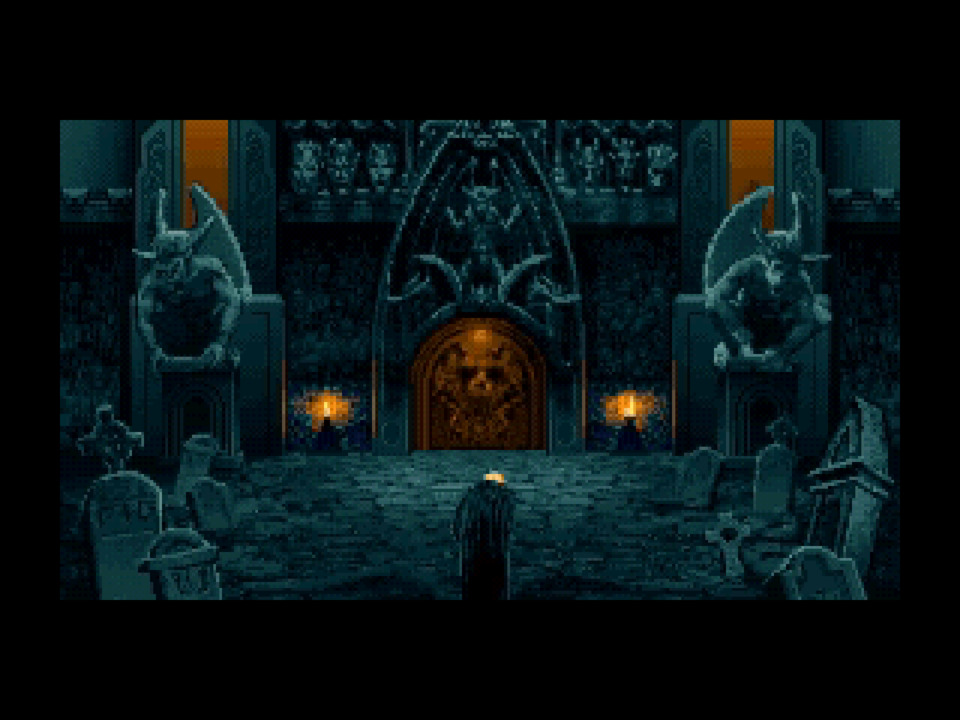
What I can evaluate is the game experience itself, which is atrocious. That's in spite of the strong first impression it gives you. The character creator is highly detailed and customizable in a way that generally wasn't seen in console games at the time. Additionally, the difficulty selection is reasonable, and the random seed dungeon generation is a cool thing to see for the time, even if it wasn't brand new tech. Yet, the whole thing goes off the rails the moment you enter gameplay. While AD&D: Slayer does have free movement, that movement feels bad with weird and uneven acceleration. That puts it in an awkward no man's land that isn't the smooth 0 to 60 of Doom, the slow steadiness of Ultima Underworld, or even the consistent-ish 15 FPS crawl of the contemporary King's Field. Every press of the d-pad is mildly unpleasant in this game. That still makes movement better than the combat.
Now we have to touch on this game's fatal flaw. The developers attempted to combine real-time first-person action with the inherently turn-based ruleset of AD&D and it doesn't even slightly work. When you get into attack range of a MoB and swing your weapon, it doesn't matter how you're positioned or where you're specifically swinging at, as long as you are facing the enemy, you'll trigger a dice roll to determine whether you hit (I think this is where THAC0 comes in) and another dice roll to determine damage. Your attacks are on a multi-second cooldown because turns in D&D are abstracted as some short time range. Also because of this, it's sketchy to attempt a King's Field maneuver of walking in to hit and walking back to avoid counterattacks. If you or the enemy are within range at the beginning of an attack the dice still roll.
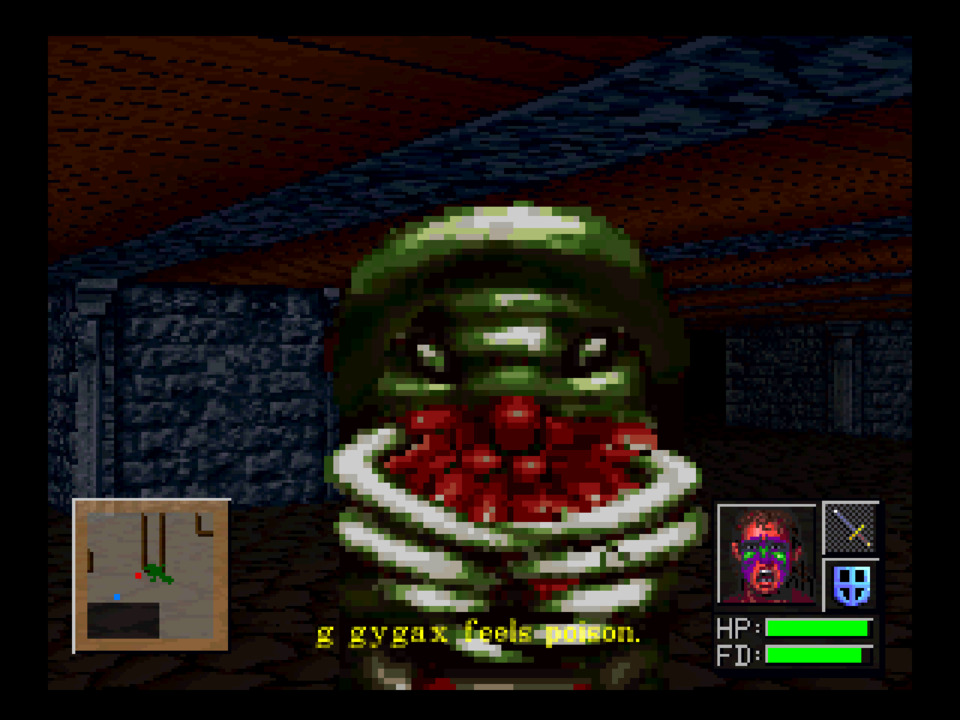
Another consequence of the real-time AD&D implementation relates to the relative strictness around hit rates inherent to the ruleset. You're going to whiff most of your swings no matter what, and if you're underpowered compared to an enemy you'll stand there whacking away doing absolutely nothing. That can be mitigated in a party focused turn-based game, especially with a humane Dungeon Master, but in a single player dungeon crawler it kills the experience dead. There's a magic system that hits better, but you only get so many spells between rests. There's no way to go about the combat that isn't a tedious chore. None of this is even touching the inventory system, which pisses me off just thinking about. In the interest of my own mental health, I'll just say accessing inventory doesn't pause the game and the in-menu cursor is less than ideal.
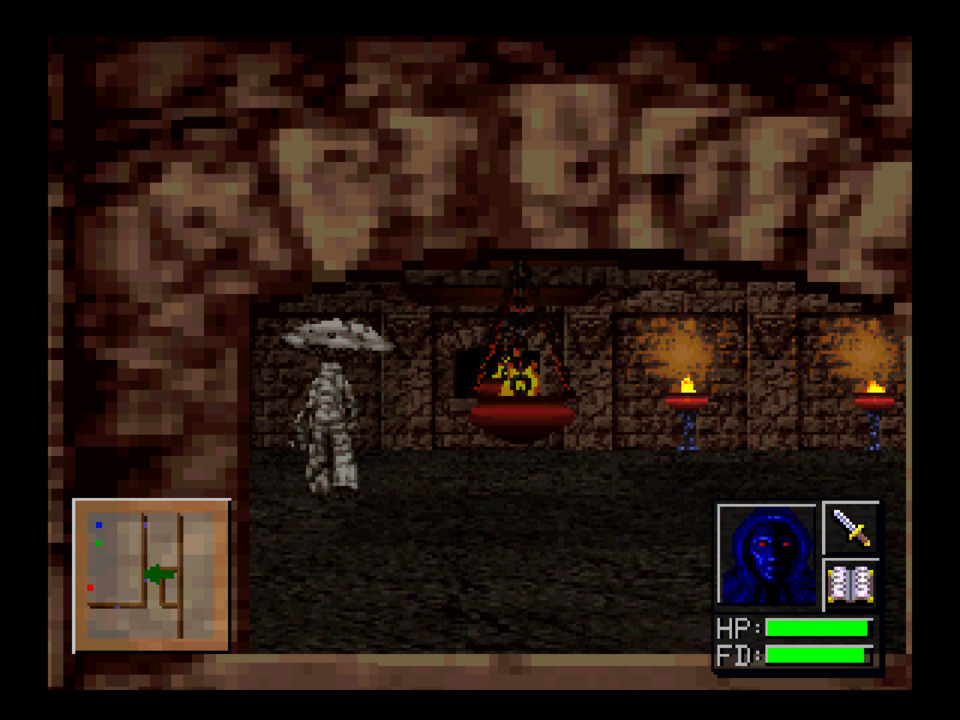
In the end, we have a procedural Rogue-Like Dungeon Crawler with a poor implementation of the AD&D ruleset. It's barely playable, which still sadly puts it above more of its 3DO contemporaries than I would like to admit. As far as background goes, this was the second to last product of the long-time collaboration between the publisher, SSI, and the D&D rights holder, TSR. Previous output in this relationship includes the Gold Box and Eye of the Beholder games. I have no experience with those, and I imagine they're nightmares to try and go back to. I guess SSI used this as a side hustle to fund their faltering Strategy game business. The relationship between SSI and TSR seems to have been acrimonious and I imagine that would make for an entertaining story. I don't know that story and I encourage you to look it up on your own time. Regardless, the 3DO finally has an RPG and I'm glad to have this thing behind me.
----------------------------------------------------------------------------------------------------
With that, we wrap up our first set of '94 3DO games as expected: not with a bang, but a wet fart. These have been the 25 games for which I found release dates when I put together the calendar. You might be able to go on Wikipedia or somewhere and "well actually" me about some release date or another, and to you I only have one response: nothing is true. As such, I draw an arbitrary line here separating these games from the 40 others we have yet to address. Before getting into what happens next, here's an update to the Ranking Of All 3DO Games.
1. Road Rash
…
2. Shanghai: Triple Threat
5. Starblade
8. Strahl
22. AD&D: Slayer
28. Off-World Interceptor
…
39. Plumbers Don't Wear Ties
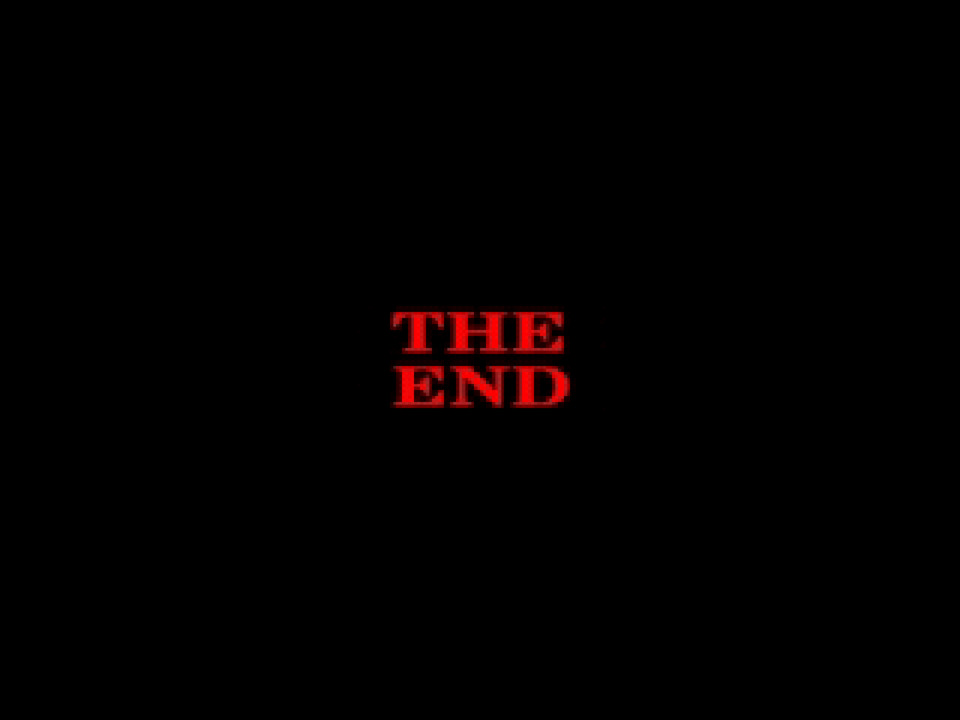
Yeah, this was one of the better weeks we've had, overall. What a cursed console. Now that we've dealt with that, what's next? It's easy to forget that there was a competitor in North America to the 3DO, because consumers at the time sure did forget about it. That's right, next time we're going to revisit the Atari Jaguar and its journey through 1994. It shouldn't surprise anyone when I say it's going to be a relatively short journey. So, prepare yourselves, because in three weeks we'll look at Tempest 2000, Wolfenstein 3D, Brutal Sports Football, and Alien vs. Predator.
In the immediate future, next week we're back to the Saturn in May '96 with WipEout, Iron Storm: World Advanced Strategy, Earthworm Jim 2, Slam 'n' Jam '96 Featuring Magic and Kareem, Rise 2: Resurrection, WWF Wrestlemania: The Arcade Game, and Striker '96.
----------------------------------------------------------------------------------------------------
I stream twice a week over on my twitch channel: https://www.twitch.tv/fifthgenerationgaming. We're diving into the depravity of the 3DO and tilting at every possible windmill involving PS1 RPGs.
One of those streams covered the games featured in this article. You can watch the archive below.
